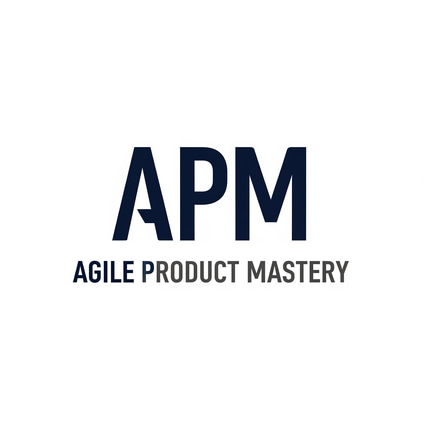From Ceremonies to Outcomes: Evolving Agile Roles for Real-World Impact
Many Agile roles have become overly focused on rituals and frameworks, losing sight of what really matters—outcomes. In this article, we explore the shift from theoretical Agile coaching and Scrum Master roles to practical, delivery-driven leadership. Discover how the Agile Product Mastery (APM) Framework supports this evolution by grounding teams in strategic alignment, execution excellence, and continuous adaptation.
AGILE PRODUCT MANAGEMENTAGILE PRODUCT MASTERY FRAMEWORK
Written by: Matt Gregory - Founder Agile Product Mastery
5/20/20254 min read


Introduction
For years, Agile coaching and Scrum Master roles have been defined by a kind of ritualism—anchored in frameworks, ceremonies, and “by-the-book” processes. Daily stand-ups, sprint planning, retrospectives, and velocity charts became the backbone of Agile delivery, often with an unspoken rule: follow the ceremony, and success will follow.
But in many real-world delivery environments—especially in regulated industries and enterprise settings—that theory doesn’t always hold.
The shift we’re seeing now is significant: a move away from theoretical Agile coaching and towards practical, outcome-driven leadership, embedded within delivery teams and measured not by ceremony adherence, but by the value they create.
It’s not a rejection of Agile—it’s a maturation.
The Problem With “Ceremonial” Agile
In many large organizations, Agile was introduced as a way to increase speed, improve responsiveness, and enhance product-market fit. But in practice, the rollout often looked like this:
An external Agile coach came in to “transform” the teams.
A new wave of Scrum Masters was trained and deployed.
Ceremonies were established: daily stand-ups, retros, planning sessions.
Jira boards filled up with tickets and burn-down charts.
And yet… little changed.
Features were still late. Business teams still felt disconnected. Developers went through the motions. And stakeholders lost faith—again.
Why? Because ceremony doesn’t guarantee outcome. And Agile done poorly becomes just another box-ticking exercise.
What was missing? Ownership. Business context. Strategic alignment. A focus on value, not velocity.
The Rise of Outcome-Focused Agile Leadership
In today’s high-stakes product environments—especially in complex, regulated, or enterprise contexts—teams are being asked to go beyond Agile rituals. They’re being asked to deliver.
That means aligning to real-world business outcomes. It means building trust with stakeholders, not just tracking velocity. And it means coaching teams not into “doing Agile,” but into solving problems faster and smarter.
This is where a new breed of Agile leader is emerging: the outcome-focused delivery guide, who wears many hats:
Coach (but only when coaching is needed)
Scrum Master (but not limited by the framework)
Delivery Lead (accountable for flow and outcomes)
Strategic Translator (bridging product vision with execution)
These are the people driving modern Agile delivery—and they’re often the unsung heroes behind successful transformations.
Grounding It in the APM Framework
At Agile Product Mastery (APM), we believe this evolution aligns with a larger transformation happening in the Agile space. It’s why we’ve developed the APM Framework, a practical model for high-impact product delivery built on three core pillars:
1. Strategic Alignment
Without a clear and shared understanding of why we’re building something, ceremonies lose their meaning. Strategic Alignment is about ensuring teams and stakeholders are aligned on:
Product vision
Business outcomes
Stakeholder priorities
Success metrics
Outcome-focused Agile leaders help facilitate these conversations—not just in quarterly planning sessions, but continuously. They embed clarity into the day-to-day.
2. Execution Excellence
This is the space where traditional Agile roles often operate—but with a twist. Instead of simply running ceremonies, Execution Excellence demands leaders who:
Remove blockers proactively
Coach on lean, just-in-time planning
Drive incremental value delivery
Champion team health and collaboration
Track and optimize flow—not just velocity
Execution becomes a craft, not a checklist. And Agile leaders become enablers, not enforcers.
3. Continuous Adaptation
Ceremonies like retrospectives and reviews can help—but only if they’re actually resulting in learning and change.
Outcome-focused teams use data, feedback loops, and experimentation to adapt their approach. They ask hard questions:
Are we solving the right problem?
Are our users getting value?
What can we test or tweak this week?
Agile leaders support this by embedding a culture of curiosity, not compliance. That’s Continuous Adaptation in action.
What This Looks Like in Practice
Let’s compare the traditional vs. modern approach side-by-side:
Stand-ups focused on task updates => Stand-ups focused on flow and blockers
Sprint Planning anchored to story points => Sprint Planning focused on outcomes and user value
Retros run on autopilot => Retros used to drive meaningful change
Scrum Master enforces rules => Agile leader facilitates outcomes
Agile seen as a “methodology” => Agile seen as a mindset to deliver value faster
This shift isn’t about abandoning Agile principles—it’s about applying them with maturity, flexibility, and intent.
What Needs to Change in Our Roles
If you’re an Agile Coach, Scrum Master, or Product Delivery Leader, ask yourself:
Are my conversations focused on outcomes or activities?
Am I enabling flow—or managing rituals?
Do my teams understand the “why” behind their work?
Am I making delivery easier, faster, more aligned?
If not, it’s not a failure—it’s an invitation. An invitation to evolve your role into something more powerful.
What Organizations Should Look For
If you’re hiring or building delivery capability, consider the shift in skills that now matter:
Systems thinking over ceremony mastery
Stakeholder communication over ticket triage
Business outcome focus over Agile framework knowledge
Data-driven iteration over process adherence
Flow facilitation over task policing
This is especially true in high-compliance industries (like finance, health, and government) where Agile success hinges on the ability to balance discipline with delivery.
The Future of Agile Roles is Cross-Functional, Strategic, and Outcome-Led
The most impactful Agile leaders I see today are less focused on whether their teams are “doing Scrum right” and more focused on whether their teams are delivering the right thing well.
They still coach. They still care about process. But they operate from a higher altitude—connecting the dots between vision, delivery, and impact.
That’s the kind of leadership Agile Product Mastery is designed to support.
Final Thoughts
Agile was never meant to be about the rituals. It was meant to help us adapt faster, collaborate better, and deliver more value. Somewhere along the way, many organizations confused the form with the function.
But the tide is turning.
As we move into a new era of Agile Product Management, roles will evolve. Teams will take more ownership. Leaders will focus on clarity, alignment, and outcomes—not just process.
And that’s a good thing.
At Agile Product Mastery, we’re building the tools, frameworks, and mindset to support this shift, because the future of Agile isn’t theoretical. It’s real, it’s practical, and it’s results-driven.
Want to dive deeper into how the APM Framework supports this evolution?
© Agile Product Mastery — Build a career that scales. Not one that burns out.
Powered by Baltimore Advisory Pty Ltd — ABN 97 678 312 475 — All rights reserved
Follow us on LinkedIn
